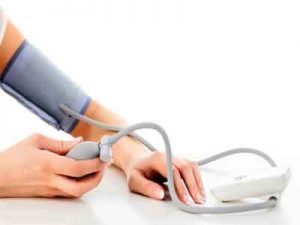- Home
- Editorial
- News
- Practice Guidelines
- Anesthesiology Guidelines
- Cancer Guidelines
- Cardiac Sciences Guidelines
- Critical Care Guidelines
- Dentistry Guidelines
- Dermatology Guidelines
- Diabetes and Endo Guidelines
- Diagnostics Guidelines
- ENT Guidelines
- Featured Practice Guidelines
- Gastroenterology Guidelines
- Geriatrics Guidelines
- Medicine Guidelines
- Nephrology Guidelines
- Neurosciences Guidelines
- Obs and Gynae Guidelines
- Ophthalmology Guidelines
- Orthopaedics Guidelines
- Paediatrics Guidelines
- Psychiatry Guidelines
- Pulmonology Guidelines
- Radiology Guidelines
- Surgery Guidelines
- Urology Guidelines
For monitoring high BP, automated office BP readings best: JAMA

According to a new systematic review and meta-analysis, automated office blood pressure readings have been found to be more accurate than those recorded by nurses and physicians in routine clinical practice. The findings of the research have been published in JAMA Internal Medicine.
On the basis of evidence, automated office BP (AOBP) readings should now be the preferred method of reading a patient’s BP in clinical practice despite initial reluctance to incorporate this technique over other methods.
Dr Michael Roerecke, at Institute for Mental Health Policy Research, University of Toronto, Toronto, Canada and colleagues conducted a systematic review and meta-analysis to evaluate whether an automated office blood pressure measurement replace readings recorded by nurses and physicians in routine clinical practice.
This systematic review and meta-analysis of 31 articles comprising 9279 participants compared automated office blood pressure with awake ambulatory blood pressure, a standard for predicting cardiovascular risk. Mean automated office blood pressure readings were similar to the awake ambulatory blood pressure readings and did not exhibit the “white coat effect” associated with routine office blood pressure measurement.
The researchers found systolic AOBP of 130 mm Hg was associated with significantly higher readings from routine office (mean difference, 14.5 mm Hg) or research BP readings (7.0 mm Hg), while participants had similar AOBP and awake ambulatory BP readings (0.3 mm Hg). All differences were statistically significant (P less than .001).
The limitations of the study were the large statistical heterogeneity of the sample, though the researchers noted little clinical heterogeneity, and that most studies measured AOBP and awake ambulatory BP on the same day to limit differences in timing.
“The existing evidence supports the use of AOBP to screen patients for possible hypertension in clinical practice, especially if one takes into account the white coat effect associated with current manual or oscillometric techniques for office BP measurement,” wrote Michael Roerecke, PhD, of the University of Toronto, and his colleagues.
In order to use AOBP in clinical practice, readings must closely adhere to the procedures used in the AOBP studies in this meta-analysis, including multiple BP readings recorded with a fully automated oscillometric sphygmomanometer while the patient rests alone in a quiet place. There has been some reluctance among physicians to adopt this technique because of uncertainty about its advantages compared with more traditional methods of recording BP during an office visit. Based on the evidence, AOBP should now be the preferred method for recording BP in routine clinical practice,” the researchers wrote.
For further reference log on to:

Disclaimer: This site is primarily intended for healthcare professionals. Any content/information on this website does not replace the advice of medical and/or health professionals and should not be construed as medical/diagnostic advice/endorsement or prescription. Use of this site is subject to our terms of use, privacy policy, advertisement policy. © 2020 Minerva Medical Treatment Pvt Ltd